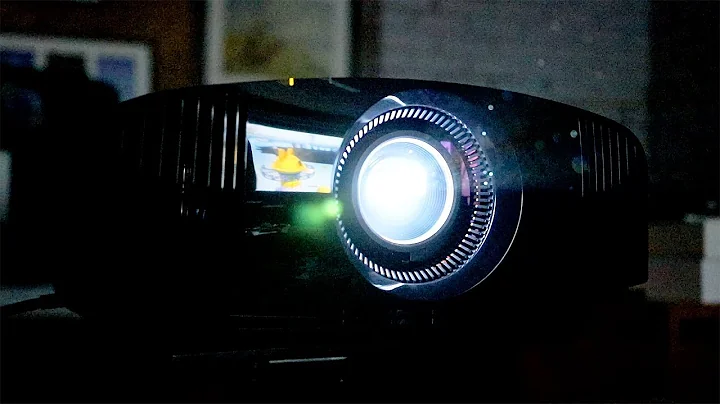
episode micronet report Perhaps because smartphones are gradually losing their halo, the architectural battle over CPU has rekindled in a new battlefield. With the M series of Apple and the Graviton series chips of Amazon at the forefront, the chip giants in the Arm camp have regrouped and launched a new round of offensive towards the last position held by X86. In China, CPU has also become a popular track, and many companies using Arm architecture have emerged, trying to take advantage of the market transformation. The originally distinct structure of the processor world has once again made waves.
Inspired by Apple,

June, Apple’s M2 chip arrived as promised. Although this chip did not surprise again and will not be sold to other manufacturers, the overall outstanding performance of the M series has reversed the decline of Arm chips in the PC market.
Arm CPU’s share of the PC processor market has reached 9.5%. Perhaps this number is not impressive, but in the third quarter of 2020 before the M1 Mac using the Arm core was launched, this number was only 2%. Dean McCarron, principal analyst at Mercury Research, believes that Arm's PC market share growth is mainly driven by strong sales of Macs, because Apple's conversion architecture is very efficient.
There has been no shortage of laptops using Arm CPUs on the market. Due to mediocre performance and uncompetitive prices, these products have never really become popular. After Apple successively upgraded its Mac product line with M1 series chips, it has stabilized loyal users and attracted a large number of new customers with its excellent performance and battery life, as well as extremely competitive pricing (lower than the previous generation of products using Intel CPUs). , expanding the sales and influence of Arm CPU in the PC field in one fell swoop.
Amazon's Graviton chips also perform well in data centers. This is the chip that opened the door for the Arm architecture to hit the high-end market, and also triggered a core-making boom among technology giants. Today, Graviton chips have spread across AWS (Amazon Cloud)'s global network and are used in different ways in 23 AWS service regions and more than a dozen different EC2 instance types. Before the success of the two technology giants
, the impact of the Arm architecture on PCs and data centers was fruitless, and they could only retreat to mobile terminals and IoT. Breakthroughs in the traditional fields of X86, especially the PC market that is well known to the public, have allowed the Arm architecture to prove that it is also an all-rounder in the computing world.
Those chip giants that have been racing in the Arm world for many years are taking action again. Although NVIDIA suffered setbacks in acquiring Arm, it still did not change its plan to develop Arm CPU, launched the 144-core Grace CPU, and made the Los Alamos National Laboratory (LANL) "VENADO" supercomputer the first user.
Qualcomm acquired Nuvia, a CPU design company founded by a team of former Apple engineers, for US$1.4 billion last year. The new Arm-core PC CPU built with Nuvia technology will be launched in the second half of 2023 and is working with Lenovo , HP and other OEMs. factory to build laptops with new CPUs.
MediaTek also revealed its plan to enter the PC at the Executive Summit held last year. Eric Fisher, vice president of enterprise sales and business development at MediaTek, said: "Apple has shown the world that it can be done, and the Wintel partnership that has lasted so long has to withstand some pressure, and when there is pressure, companies like ours There will be opportunities.”
In China, start-ups represented by Yixin, Qilingxin, Hongjun Micro, and Yuxian Micro have also started the road to entrepreneurship in Arm CPU. The founders and backbones of these companies are all from well-known international and domestic chip companies. They have rich experience in CPU research and development and are sought after by investment institutions.
Regarding this wave of CPU entrepreneurship in China, a senior investor who participated in the investment pointed out: "Apple has actually broken Wintel's monopoly on PCs. Once this road is opened, new entrepreneurial opportunities will appear. Domestic CPU companies used to mainly In the information innovation market, it only accounts for about 20% of the market share. Now facing a broader consumer market, start-ups will naturally appear in large numbers. "
To compete in the world, we must rely on the support of V9.

Only Apple and Amazon are leading the charge, which is not enough. To completely impact the position that X86 has held for many years.Only by comprehensively upgrading the Arm architecture can we give chip manufacturers advantageous weapons.
In March 2021, Arm released a new V9 architecture, targeting high-performance computing and intended to lay the technical foundation for the next 10 years. The
V9 architecture retains all the functions of V8, uses AArch64 as the baseline instruction set, maintains downward compatibility, improves security, AI (machine learning), scalable vector extensions and DSP improvements, and expands the scope of applications. The enhancement of
security and AI is the focus of the upgrade. The V9 architecture introduces the concept of Arm Confidential Compute Architecture (CCA) and dynamically created confidential realms (Realms), which can protect code and data from being stolen or modified. At the same time, Armv9 will use the new generation SVE2 instruction set to effectively enhance the processor's performance in machine learning and digital signal processing.
Arm also proposes the design method of Total Compute. By optimizing system-level hardware (including Arm's CPU, GPU, and NPU) and software, the comprehensive computing design method is applied to the entire IP portfolio of automotive, client, infrastructure, and IoT solutions to accelerate the Armv9 architecture. Overall computing performance. The most important thing about
is that the V9 architecture enables the next generation of chips to achieve a basic performance improvement of more than 30%. Taking into account the impact of process upgrades, the overall improvement may reach 40%.
"With the launch of Arm's V9 architecture, the commercial success of Arm CPU in the PC field has become possible." Ren Qingyuan, assistant to the CEO of Xixin Technology, believes that the emergence of the V9 architecture is of great significance.
Yan Yiqiang, chief researcher of at Lenovo Group, believes that "after upgrading to V9, the CPU's delay bandwidth and frequency and other indicators have been further improved, and the overall performance will have a revolutionary change. Thanks to this iterative upgrade, the future will be based on Arm-based PC shipments will grow rapidly. "
This year, Arm officially released a V9-based CPU. These include important updates to Arm Cortex-X3 and Arm Cortex-A715, as well as Arm Cortex-A510 and DSU-110 (DynamIQ shared unit).
Cortex-X3 is Arm’s third-generation main processor core. According to Arm’s introduction, the Cortex-X3 core has achieved double-digit growth in Arm CPU’s IPC ((instruction set per clock cycle, equivalent same-frequency performance)) for three consecutive years. In the field of notebook , it is comparable to the latest mainstream Compared with laptops, Cortex-X3's single-thread performance has increased by 34%.
's new DSU can support up to 12 cores and 16M L3 cache on Cortex-X3, which can be implemented across laptops, desktop devices, and mobile devices. , DTV and other equipment.
According to foreign media reports, the Cortex-X3 CPU refers to one of the mainstream laptop processors of Intel . From this point of view, Arm’s goal in the PC field is clear. If so.
It is said that in addition to the process upgrade of Apple's M3 series, another major change is the upgrade of the V9 architecture, and domestic CPU start-ups have basically obtained the authorization of the V9 architecture to compete with international manufacturers in the future. A solid foundation has been laid.
Ecosystem changes
"It is not easy to make a CPU", this is the sentiment of many people in the industry. In addition to passing the technical hurdles, there are also more difficult ecological hurdles to overcome. Chain, the application level needs to be supported by the operating system.
As far as the most familiar operating system is concerned, Android has achieved Arm’s glory on the mobile side. If you want to copy this success, Windows is actually the threshold that cannot be avoided. , and Microsoft have also been trying to enter the Arm system. As early as 2011, Microsoft launched 32-bit Windows RT running on the ARM architecture, but failed due to software compatibility. In 2017, Microsoft made a comeback and officially launched it together with Qualcomm. Windows on Arm. This time, Microsoft finally implemented the ability to run x86 code programs on the Arm processor . After several upgrades, Windows 10 will support 64-bit ARM architecture Windows devices in 2020. Problems with software compatibility and software practicality have been basically resolved.
Qualcomm has signed an exclusive agreement with Microsoft to bind Windows. With the end of this contract in 2022, the last barrier for other chip suppliers to enter the field has also been resolved. Completely disappeared.What's more interesting about
is that Microsoft was the first to adapt applications to the M1 chip Mac. x86 architecture PC suppliers such as Lenovo and Dell have to compete with the popular Mac. In addition to expecting significant improvements in x86 chips, they also hope to use efficient Arm processors to fight back. This may also accelerate the advent of non-Apple Arm CPUs.
In recent years, Arm CPU has also opened up a special field in the PC market, using Chromebook of Chrome OS. During the epidemic, this kind of entry-level, low-consumption, and full-time online product became very popular overseas. MediaTek has expanded its share of the laptop market by cooperating closely with Google and laptop manufacturers to introduce its Arm processors into Chromebooks. It is foreseeable that Chromebooks will continue to be a battleground for Arm CPUs in the future.
is on the server side, and the previous software barriers are also disappearing. All large operating systems, such as Linux, BSD, and windows, can be supported by the Arm architecture. Containerization, including virtualization tools such as docker, VMware, KVM and Kubernetes, can all run on the Arm architecture. Programming languages, including CUDA and Java are also supported by Arm. The conditions for the rise of Arm CPU are also fully met.
There are currently about 120 billion Arm devices being deployed, mainly distributed in the mobile terminal, Internet of Things and consumer electronics fields. Such a large-scale equipment deployment has made the Arm system the largest processor ecosystem. With the huge momentum of the mobile market impacting PCs and servers, it is only a matter of time before Arm’s new ecosystem is established.
(proofread/Andrew)





















